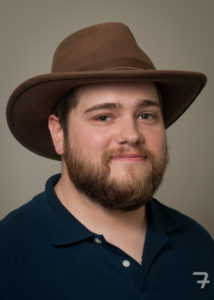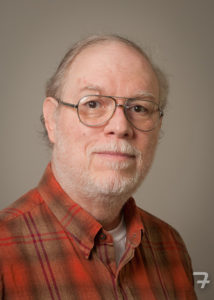
By Harvey Heyser
If you have passed my layout design table at the Mainline Hobbies/South Mountain Division Mini-Con, you might have noticed several milk crates with binders in them. Those binders contain copies of track plans published over the years – quite a number of track plans. (Kalmbach claims they have more than 50,000 in their collection; sometimes I feel as if I have copied every last one.)
Why copy a bunch of track plans? First, I am of the opinion that studying published track plans helps us improve our design abilities. When we look at what someone else has done and evaluate it according to our own ideas and plans, we are using our powers of analysis, a very relevant skill for the design process. Second, as the binders are sorted by type of layout, we can look at quite a few similar designs in a relatively short period of time. As each plan is at least a bit different, we get a chance to see numerous ways of attacking the same problem. Third, these plans contain quite a few good ideas. We may see one that addresses a problem we face but cannot solve.
Trends: The benefit of spending many hours at the copy machine is that I have noticed some trends manifested in the track plans of various eras of our hobby. For instance, around-the-wall (walk-around with the train) style layouts have become much more popular than island style (table-top) layouts. In recent years, we have also seen a large growth in double-deck layouts possibly because this approach allows much longer mainline runs (more towns modeled and much longer tracks between them).
One deck – twice around: Sixty or so years ago, published plans often featured a different approach: twice around on a single-deck (separated by scenery). An instructive example is Doug Smith’s Brook Valley RR (Model Railroader, Oct. 1957).
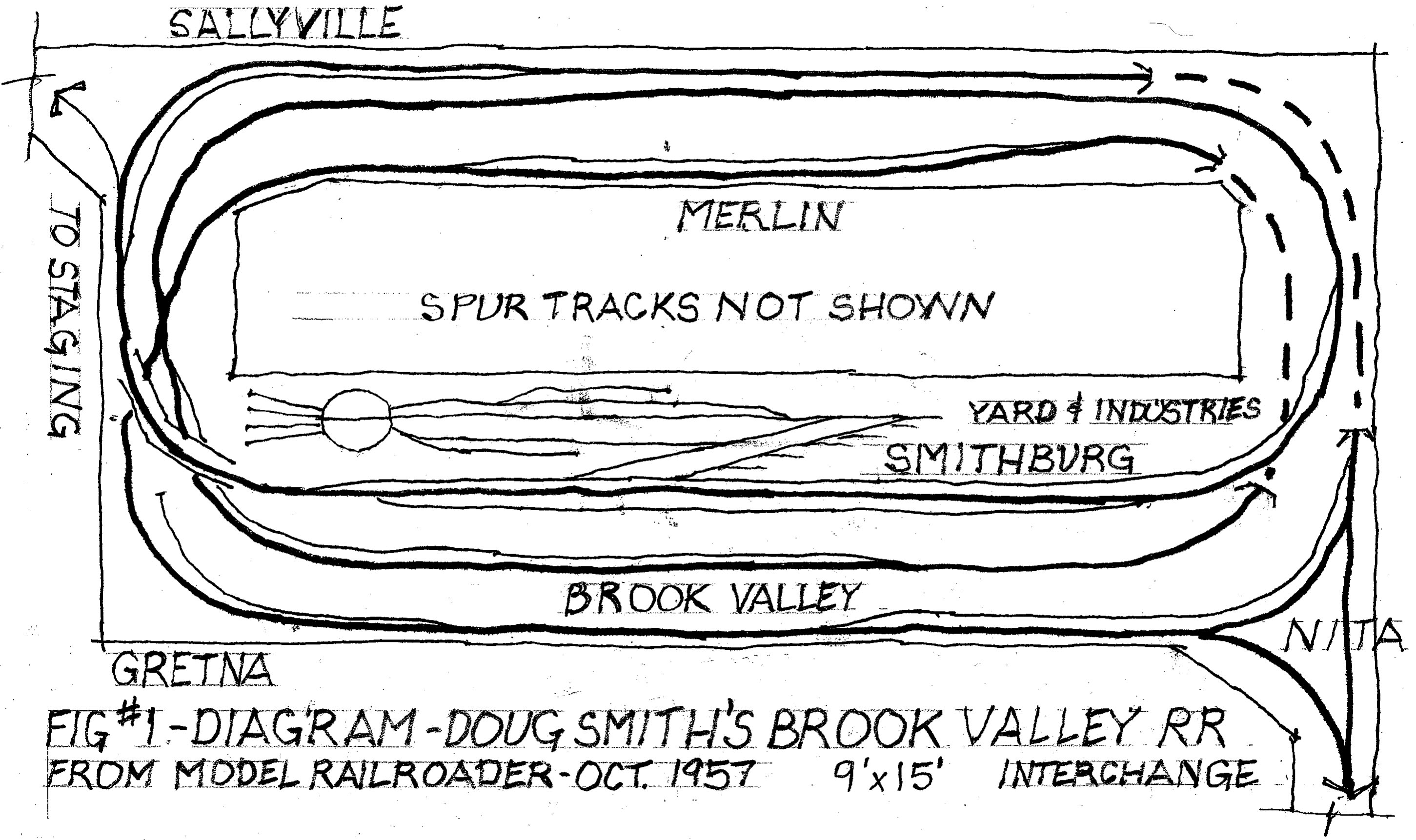
(Doug, by the way, was one of the first proponents of the car card/waybill car forwarding system and was the first to earn a Master Model Railroader certificate.) The distance between Merlin and Brook Valley is half way around the layout, and that between Brook Valley and Smithburg is three quarters of the way around the layout. Those distances are significantly longer than the train lengths (as indicated by the length of passing sidings) and, thus, are somewhat unexpected on a moderate-sized 9 ft. by 15 ft. layout.
Single-deck twice-around layouts have been criticized for being “insincere,” using one scene to represent two different locations. It seems to me that we should reconsider. While two decks may be the best approach for an experienced modeler like Tony Koester, a modeler with less experience is likely to find the increased complexity of double deck bench work and the need for one or more helixes leads to construction bogging down and to the layout never getting finished.
Along these lines of thinking, Howard Zane’s recent discussion of his new layout (MR, Feb. 2020) using twice-around on a single-deck pointed out the following: “The Piermont Division is actually double-deck but with both levels on the same scenicked deck. [He] refers to the design as a ‘blended-deck’ layout. Instead of a helix, the main line climbs a long 1.5 percent grade to reach the upper level.” The second track through his scenes is separated vertically from the first and frequently depicts a very different type of place such as rural versus urban.
In summary, the twice-around approach allows for longer runs between towns, does not require helixes, and is decidedly less demanding of complex carpentry (although such designs usually do require grades and a more vertical scenery configuration). However, the approach can be applied to flatter areas, as demonstrated by John Armstrong’s Broadalbin, David City, and Pacific (“Railroad in Suspension,” MR, May 1957),
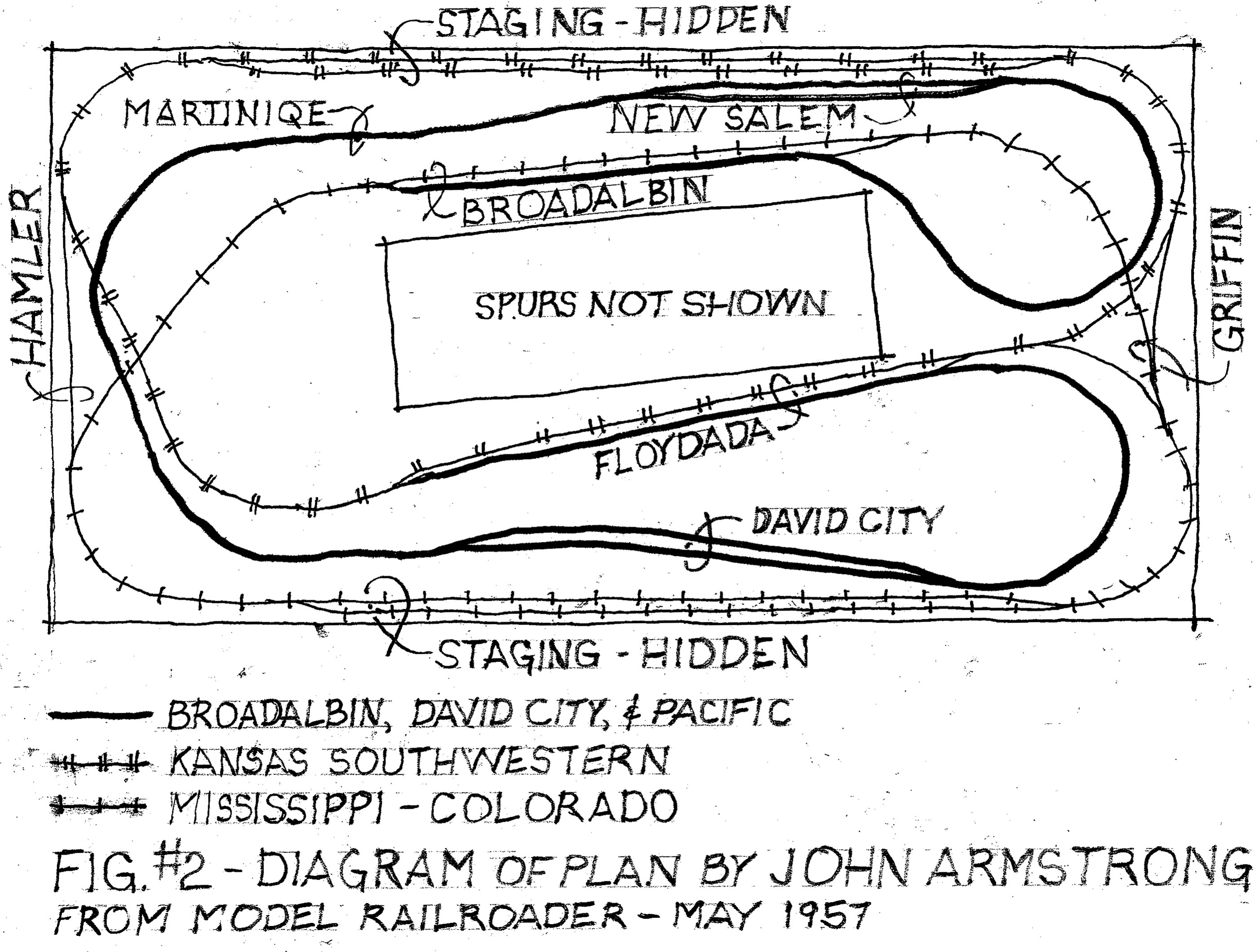
an amazing example of multiple times-around set in relatively level mid-western scenery – two mainline railroads with a shortline bridge railroad between them. Staging for the mainline railroads can be hidden from view by low rises and/or rows of trees.
A fourth advantage of the twice-around approach is no upper deck blocking the view of the lower scenery. Avoiding the viewing angle problems of double-deck layouts means that aisles do not have to be as wide because crews do not have to back up to see trains on the lower deck.
A fifth advantage comes into play when modeling dramatic mountain scenery. The twice-around track configuration paired with deeper scenery allows the more distant tracks to seem further away. Colorado narrow gauge layouts have taken advantage of this possibility quite frequently.
Issues: There are, however, some issues that need to be addressed with the twice around approach – things that are also common with double deck layouts.
- Avoid locating two operation-heavy places one above the other. Make one place more important than the other. Otherwise, crews working in those places will get in each other’s way. Locating a less interesting mainline run above (or below) a yard, for instance, would be a better approach.
- Be particularly aware of the need for aisle space. Two operating areas across from each other need a wider aisle to permit crews passing. In addition, you need to allow space for crews operating on the second tracks through those scenes. That need may only be for a place where an engineer can stand and watch the train from a distance, but it must be considered none-the-less. With two trains running on the mains (across from each other) and two switching, there is the potential for a total of four crews in a given space. Aisles four feet (or even wider) may be necessary. (These space requirements also apply to double deck layouts.)
- Make efforts to hide trains that are running on the mainline stretches. Obviously, tunnels (especially short ones) are one way to do that. For some railroads though, tunnels might not be appropriate. In that case, scenery (trees, hills, cuts, etc.) and structures can hide trains. Also remember intermittent hiding: mainline crews do not have to see their entire train in order to monitor its progress. Behind a stand of spaced trees, for instance, that train is less likely to distract crews working at the other place in that same scene.
- Avoid complicated trackwork on the line furthest in; bring operational places to the foreground whenever possible. Reaching over scenery and structures has a tendency to be quite destructive. Deep scenery may be great to look at, but it makes access for derailments much more difficult. Consequently, avoid turnouts and other complicated trackage that increase the need for access on rear tracks.
A good example of the application of these suggestions is Russell Decho’s Maywood Central (MR, Jan. 1962).
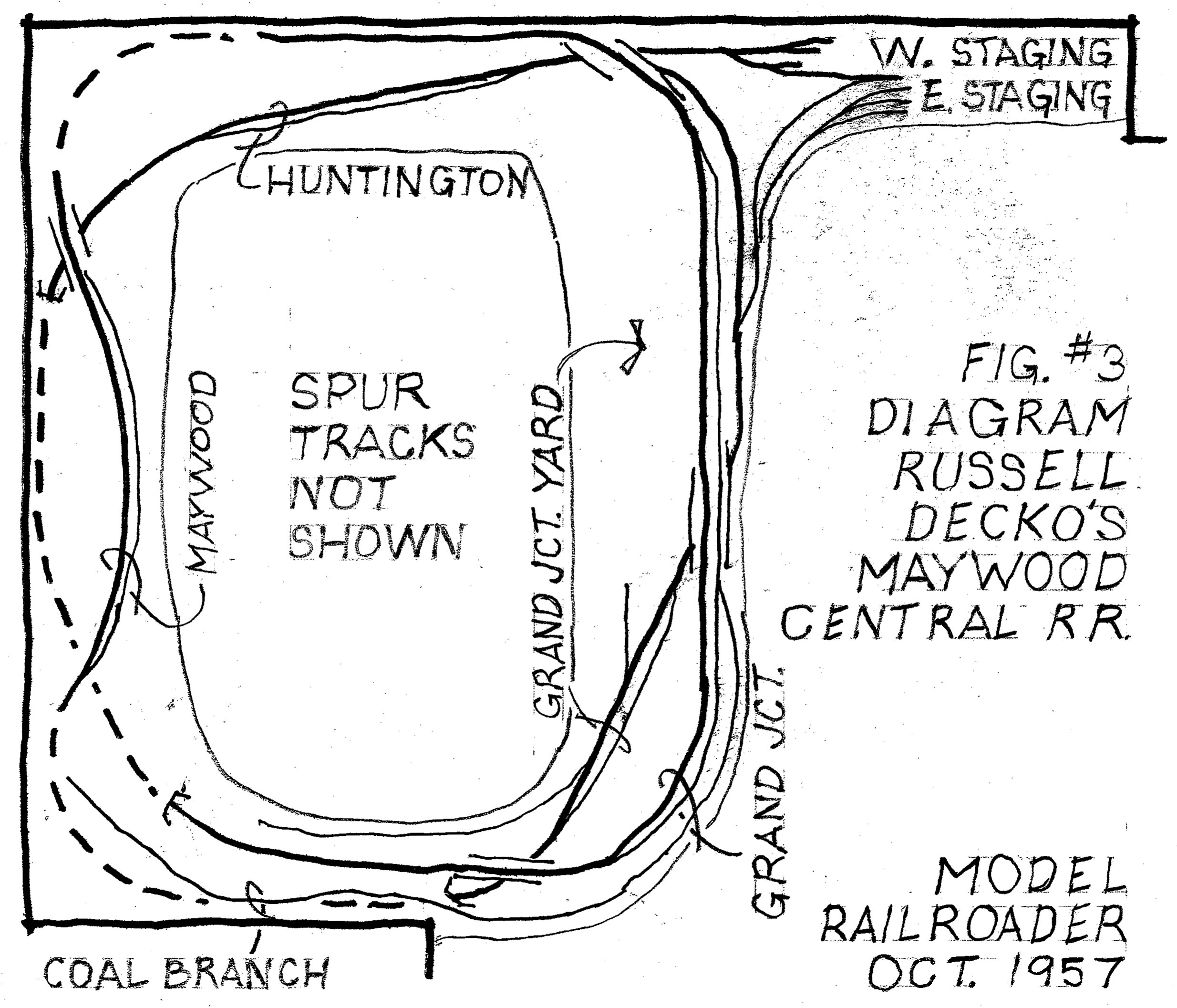
On three sides of the room, two lines jockey for prominence and closeness to operators. The second line through a scene ducks into a tunnel or is vertically separated from the line with an operating focal point. (On the fourth side, there are two operating areas, but they are accessed from different sides of the layout.) The result is a layout with longer runs between towns and no need for operators to get in each other’s way.
So, if you want longer runs between your towns, less complicated benchwork, no helixes, no upper deck blocking views, and tracks surrounded by dramatic scenery, give the twice-around approach consideration.
And please feel free to stop, sit, rest, and look at the track plan binders during the Mini-Con next year even if you do not feel like discussing layout design.

